Genre: Shmup Developer: Team Andromeda Publisher: Sega Enterprises Players: 1 Released: 1995
My first chance to see the Saturn in motion was about a month before the console launched. I stopped at my local Electronics Boutique, as I often did after work, and there was a promotional video running on the dual monitors they had hanging from the store’s center. As I looked up and watched footage from Virtua Fighter, I was impressed at its visuals, but it didn’t sell me. Clockwork Knight did a better job, but I still wasn’t convinced it was worth dropping $400. Then, the video cut to a scene of these massive sandworms launching out of the desert and over the top of screen as the player character fired at them frantically. My jaw dropped at the sight. It looked like something out of Dune. I needed to see more, now.
Yes, Panzer Dragoon was the game that guaranteed my Saturn purchase, and along with Daytona USA, it was the game I played the most at launch. It looked incredible and showcased a world that was unique and wondrous. There was an almost steampunk vibe to its post-apocalyptic world, yet the vehicles looked like they might have come out of a Mad Max film. But there were dragons! And they shot homing missiles and lasers! How could you not want this game?
A major part of what made Panzer Dragoon so memorable for me was the fascinating universe in which the action took place. Team Andromeda used the game as a showcase for the new Saturn’s power and created mysterious and gorgeous environments (with artwork done by the legendary Moebius). Magnificent airships puttered through the skies, and ancient and deadly machinery roared to life under the power of the evil Empire that terrorized the populace. Whatever weapons destroyed civilization also created monstrous creatures like the previously-mentioned sandworms that also threatened the main character. It would take a few more games to build on the lore of this wonderful world set thousands of years in the future after the decline of humanity, but the foundation was set with amazing visuals and a breathtaking soundtrack by Yoshitaka Azuma. Seriously, the music was phenomenal. The title theme alone was worthy of a live concert, and Panzer Dragoon maintained that level of excellence throughout its six stages.
That promo video I saw didn’t make it clear that it was a rail shooter, so at first, I thought it would play like a slower version of Space Harrier. Boy, was I wrong. Unlike Yu Suzuki’s classic, which emphasized speed and in-your-face action, Panzer Dragoon’s challenge came from all sides. Enemies attacked from every different direction, and the radar screen in the top-right corner maintained players ever vigilant. Some might have found this choice of gameplay style questionable, but developer Team Andromeda quickly made its case. The control was quite simple and made ample use of the Saturn’s shoulder buttons right out of the gate. It was a novel thing to see on console at the time and was fluid and intuitive.
It all worked easily, though it might take newcomers a few tries to get the hang of things. The main character could fire a standard shot by tapping the fire button or engage a multi-shot lock-on attack by holding it down and targeting up to eight enemies onscreen. The standard shot was also necessary for shooting down enemy projectiles that couldn’t be dodged, and it took a surprising bit of practice to switch between it and the lock-on with precision.
With only six stages, Panzer Dragoon was a short enough experience to make such practice fun. The stages were around five minutes long with some great boss battles but I must caution against assuming that the simple gameplay meant that the game itself was simple to beat. Not paying attention to the radar could be disastrous since killing all enemies was paramount. A high kill ratio at the end of each stage netted additional continues, and they could be sorely needed. Panzer Dragoon wasn’t necessarily an easy game, especially during boss fights. A game over meant starting the stage over from the beginning, so one had to make each shot count. Panzer Dragoon didn’t use a save file either, meaning that the shot ratio reset every time the console was powered on. Thankfully, there are a slew of codes and unlockables out there, making the game easy to jump into for a quick run.
At its core, the arcadey nature of Panzer Dragoon’s, which Team Andromeda designed to be its strength, might be its only real flaw. Once you’ve gone through the game and seen everything, there’s not much else to do. The short duration is certainly a problem today but wasn’t that much of an issue in 1995. Granted, the Saturn’s limited selection of launch titles was probably the biggest factor behind that. Most people today will quickly point to the sequels, Panzer Dragoon II Zwei and the legendary Panzer Dragoon Saga, as superior entries, and that might be true. Sequels should improve on the initial game. However, the first Panzer Dragoon got so much right that it gave subsequent episodes a brilliant foundation on which to build. Sega showed us how much it truly believed in Saturn in 1995 with this sensational launch title, and it would be a shame not to experience the level of creativity and inspiration that went into it.

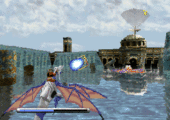
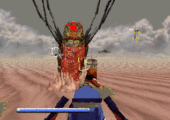
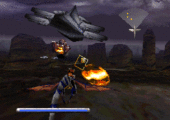
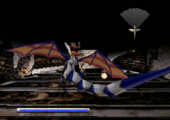
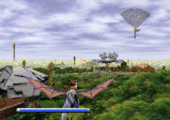
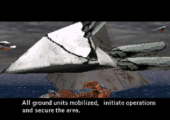
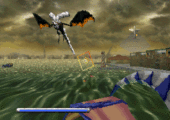
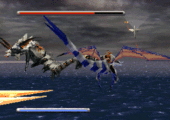
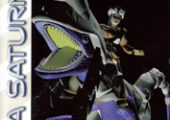
Recent Comments